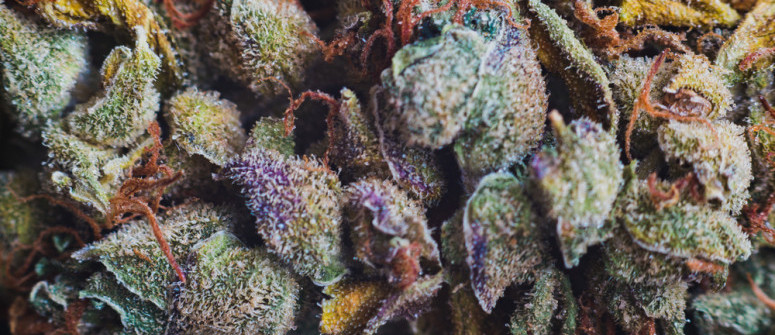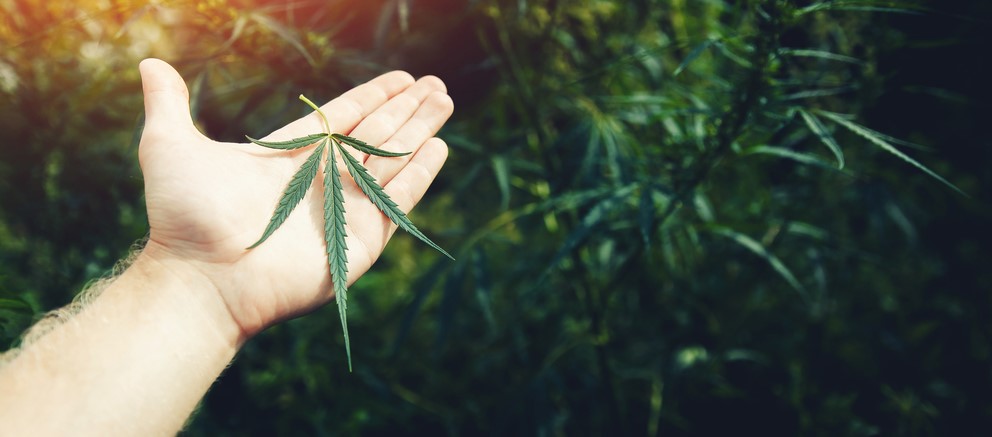What are flavonoids and are they good for you?

You might not have heard of flavonoids, but you've probably appreciated their work. Giving cannabis flowers the beautiful pigmentation they're known for, along with being spotted in a wide variety of other plants, these little compounds get a lot done. Research is also being done into whether they can help treat inflammation, fungus, cancer & more.
Have you ever picked up a really nice cannabis bud and admired the deep hues of purple? Those streaks of colour make the flower look so good you barely want to smoke it, although we're sure you do anyway. If you appreciate these details, you have something to thank flavonoids for. It's not just flower colour, either. Flavonoids, are fascinating compounds with a few jobs. Even though they're just small phytochemicals, they play a vital role in a wide range of plants and foods.
WHAT ARE FLAVONOIDS?
Getting down to the basic biology, a flavonoid is a group of polyphenolic compounds. These compounds, once together, act as a secondary metabolite that you can find in hundreds of fungi and plants. One of these plants, of course, is cannabis, and you get a good sense of what flavonoids do when you smoke. They influence flavour, aroma and colour. Cannabinoids and terpenes usually get all the credit in making cannabis what it is, but flavonoids actually work with terpenes to give the plants their flavour and aroma. Seeing their role in flavour, aroma and pigmentation, it probably comes as no surprise to hear they make up roughly 10% of the compounds on cannabis.
WHAT TYPES OF FLAVONOIDS ARE THERE?
How do all of those other fungi and plants along with cannabis have one compound in common? Well, technically they don't; there are around 7,000 kinds that we know about, all divided into various subcategories.
Starting off, we have the flavones, an important subgroup of flavonoids that often presents itself as glucoside form. Anthocyanins, another major group, are a main source of pigment. Flavanones are chiefly known as free radical scavengers (we'll explain later). Isoflavones are at the party too, playing precursor to the development of antimicrobial and antioxidant phytoalexins during interactions between plants and microbes.
Flavonols, not to be confused with flavones, are widely distributed across the plant kingdom, along with being proanthocyanin building blocks. Lastly, chalcones are the one subgroup noted as missing a certain "ring" of the flavonoid chemical structure. Thus, they are also commonly referred to as "open-chain" flavonoids.
WHERE ARE FLAVONOIDS FOUND?
We've discussed it briefly here and there, but it's good to have an idea of which plants, legumes and fungi contain which flavonoids. When you smoke cannabis, for instance, you're mainly coming into contact with around 20 different flavonoids, which are classified as cannflavins. You can find these in cannabis of all kinds, of course, but full-spectrum CBD oil is an abundant source if you want to avoid a high.
If you're looking for flavones, mint, parsley, red peppers, and celery are amongst the best sources, while red grapes, strawberries, blackberries and blackcurrants are chock-full of anthocyanins. Flavanones are mainly found in citrus peels, and are known to give them their bitter taste. Isoflavones can be found in soy and legumes. Flavonols find their home in kale, tomatoes, onions, lettuce and more. Chalcones appear in tomatoes as well, along with strawberries, pears, and certain wheat-derived goods.
HOW DO FLAVONOIDS WORK?

So we know where to find them, but what do flavonoids do in their natural environment? Well, simply enough, they protect the plant they live in, regulating their cell cycle and neutralising free radicals.
Free radicals, which are molecules with unpaired electrons, face an issue when oxygen gets converted in the mitochondria. The oxygen loses an electron, and it'll work to get back in balance by finding another atom's electron. When it finds the free radical, whether it's also oxygen or another molecule like protein, the oxygen atom tears the electron away, destroys that cell's structure, and kills it in turn.
Flavonoids, wanting to stop this process, inhibit the enzymes responsible for making free radicals at all, as well as eliminating the active ones. This set of duties leads to flavonoids being recognized as an antioxidant. However, research has shown that in humans, the body absorbs less than 5% of the flavonoids it is supplied, with most being quickly metabolized and excreted, meaning that flavonoids have only negligible systemic antioxidant activity. The increase in antioxidant activity after ingestion of flavonoid-rich foods is not caused directly by flavonoids, but as a byproduct of their breakdown and excretion.
There's a lot more we have yet to know about how these compounds function, but even the information we have now provides a lot of necessary context when discussing these biological processes.
WHAT ARE THE BENEFITS OF FLAVONOIDS?
Now that you know where to get flavonoids in your diet, and how they work, you're likely wondering why we want you to know about them at all. Well, as we mentioned earlier, they offer benefits well beyond making cannabis look, smell, and taste good. In fact, much of what they can accomplish may directly benefit wellbeing.
To start, in 2015, researchers noted five subgroups of flavonoids, including flavones, flavonols, flavanones, and anthocyanins, showed an ability to decrease blood pressure. Scientists have also found the sort found in tea, coffee and soy can also potentially decrease one's risk of stroke or heart attack. There's also a correlation between high-flavonoid diets and a decreased risk of type II diabetes, but further research needs to be done. Last, but very much not least, inflammation could fall under the hands of flavonoids, with study reviews pointing in a bright direction. This is especially a benefit of cannflavins, and may contribute to the well-known anti-inflammatory properties of cannabis.
The research is starting to come in, but all it says is that there needs to be more. If these chemicals can go such a long way in improving our well-being, why would we waste time not knowing what they can offer us?
FLAVONOIDS — AN ESSENTIAL PHYTOCHEMICAL
While they're not often discussed, we hope you now get why flavonoids are such an important piece in the biological puzzle. Whether you're enjoying the anti-inflammatory benefits of the cannflavins in cannabis, or the vision-improving properties of anthocyanins, flavonoids have been working awfully hard for us and the plants they're found in, and it's time they receive their due praise. Pick up some fruits and vegetables for dinner tonight, grab yourself some CBD oil (or plain ol' weed), and bask in the goodness of those wonderful compounds.




